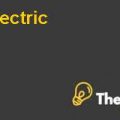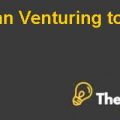
Internal Environment:
Capital Structure:
An organization with a stature like Google, which is based in the technology industry, needs a sound structure to keep its competitive advantage and stay relevant in the market and due to that the structure of Google has recently changed to make the structure cleaner and more accountable. The founder and Co-Founder Larry and Sergey have started a new company called Alphabet.
The creation of Alphabet means that Google will only be associated with its core business and it will report as a segment of Alphabet. The new structure of Google will allow it to focus on the opportunities inside of Google and the CEO is Sundar Pichai who is a very talented Google employee for years and have the knowledge and experience needed to run a company like Google.(Google, n.d)
The functional structure of Google is fairly regular with some extra positions at the top of the organization of Chief Culture Officer and Chief Internal Evangelist. It follows the structure with management positions specialized by value chain activity. Google is a globally diversified company so these positions are divided further and grouped into regions of their interests that allow Google to manage the breath of its operations.
There is a multi divisional structure under each top level activity where the small business units are further divided on the basis of product market and the geography. It is important for Google to give its business units the flexibility to innovate which is an important factor for the development of new products due to which the hybrid form of functional and multi divisional structure suits Google well, which also ensures the centralized planning which Google needs.
Corporate Culture:
Google has an unusual organizational structure, which receives a lot of attention and acclaim. The organizational culture of Google is designed to encourage the creativity and loyalty which has resulted in many products created by the employees. The culture of Google has evolved with the increasing size of Google.
The 70/20/10 rule is followed by all the employees of Google under which they devote 70% of their time to the job they are assigned by the management. 20% time is spent every day to the new projects and the ideas related to the core projects while 10% to the new ideas which are not necessarily related to the related projects and can be related to anything employees want to. This rule is the driving force behind many of the new products and services Google provide. This rule is created for everyone working in Google, no matter which field they are working in. The ideas are then presented directly to the top management and executives of the company who directly hold meetings with the employees of Google.
There are loads of perks for employees that include the cooked food by company chef, transport to the employees, environmental friendly cars, and employees can also travel on bikes and scoters inside the Head office building of Google, other facilities include daycare facilities and exercise gyms and other amenities.The basic purpose of all these facilities is to create a fun and creative atmosphere. (Gratton, n.d)
Corporate Resources:
Tangible Resources:
The tangible resources of Google have increased significantly over the years; it has over 70 offices in more than 40 countries around the globe which look over all the operations, product development of the company. These offices are state of art buildings providing the best atmosphere to the workers have all required equipment Google need to keep innovating and developing products. Google also has other asset and the fixed assets of Google in 2015 Q2 are $27008 million which has increased from $23883 million in 2014. Google generates a lot of internal funds and the total cash and cash equivalent in Q2 2015 is $18453 million. (GOOGL, n.d).Internal Environment Case Solution
Intangible Resources:
The intangible resources for any organization are very important as they play the main role in the development of the business and help in getting the advantage over competitors. The Intangible resources in the technology sectors of Google include patents, copyrights, know how R&D facilities and the scientific employees. The patents and developed technology of Google in Q2 2015 values approximately $3719 million. The reputation of the Google which includes its brand, customer loyalty and its relations with stakeholders are also very important tangible resources for Google. The trade names are valued at $317 million at the end of Q2 in 2015 while its relations with customers valued at $177 million. The value that employees create cannot be directly measured in the financial terms for each employee, but keeping important and talented people is very important for Google.(Google, n.d)...........................
This is just a sample partial case solution. Please place the order on the website to order your own originally done case solution.













